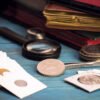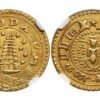Numismatics and Notaphily: Hobby or Investment?
Collecting coins and banknotes has long fascinated enthusiasts worldwide. Known as numismatics (coins) and notaphily (banknotes), these hobbies offer more than just the thrill of collecting. For some, it is about exploring history and culture, while for others it is a way of investing in tangible assets that can appreciate in value. This often raises the question: are coins and banknotes simply a hobby, or do they qualify as an investment?
Coins and Banknotes as a Hobby
For most collectors, the journey begins with curiosity and passion. Coins and banknotes are miniature works of art that reflect the culture, politics, and values of their times. An ancient coin might carry the portrait of a king or a symbol of divinity, while a banknote may showcase monuments, freedom fighters, or wildlife.
Collectors often build their collections around themes—such as colonial issues, independence-era notes, commemorative series, or rare denominations. The joy comes from discovering unique pieces, understanding their stories, and creating a personal archive of history. Unlike stocks or bonds, the emotional connection to a century-old coin or a discontinued note is irreplaceable.
Coins and Banknotes as an Investment
Beyond their historical appeal, rare coins and banknotes can be valuable assets. Pieces with low mintage, limited circulation, printing errors, or historical significance often gain premium value in auctions and private sales. For example, a common rupee might trade close to face value, while a rare misprinted note or an obsolete princely state coin can command thousands.
Banknotes are particularly appealing because paper issues often have shorter lifespans than coins, making well-preserved specimens highly sought after. Similarly, coins in mint state or with unique designs attract investor attention. Unlike bullion coins that follow the price of metal, numismatic and notaphilic items derive their value from rarity, demand, and condition.
Risks and Considerations
While coins and banknotes can appreciate in value, they should not be seen as guaranteed financial instruments. The market is less liquid compared to gold or equities, and values can fluctuate depending on collector demand and global interest. Counterfeits, reproductions, and artificially altered items are also common, making knowledge and authentication essential.
A serious collector-investor must pay attention to grading, provenance, and authenticity certifications. Trusted dealers, reputed auctions, and catalog references are crucial to avoid costly mistakes.
The Balanced Approach
The most rewarding path is to treat coins and banknotes as both a passion and a long-term investment. Collect pieces that inspire you, whether they are artistic, historical, or culturally significant, while also considering their potential to appreciate in value. Many collectors find that building a diversified collection of coins and notes brings both joy and financial security.
Conclusion
Numismatics and notaphily are more than just hobbies; they are gateways to history, culture, and identity. At the same time, rare coins and banknotes can act as valuable assets that appreciate with time. Whether pursued for love of heritage or as an alternative investment, the true value lies in the blend of passion and prudence. A collection, after all, is not only a treasure for today but also a legacy for generations to come.





